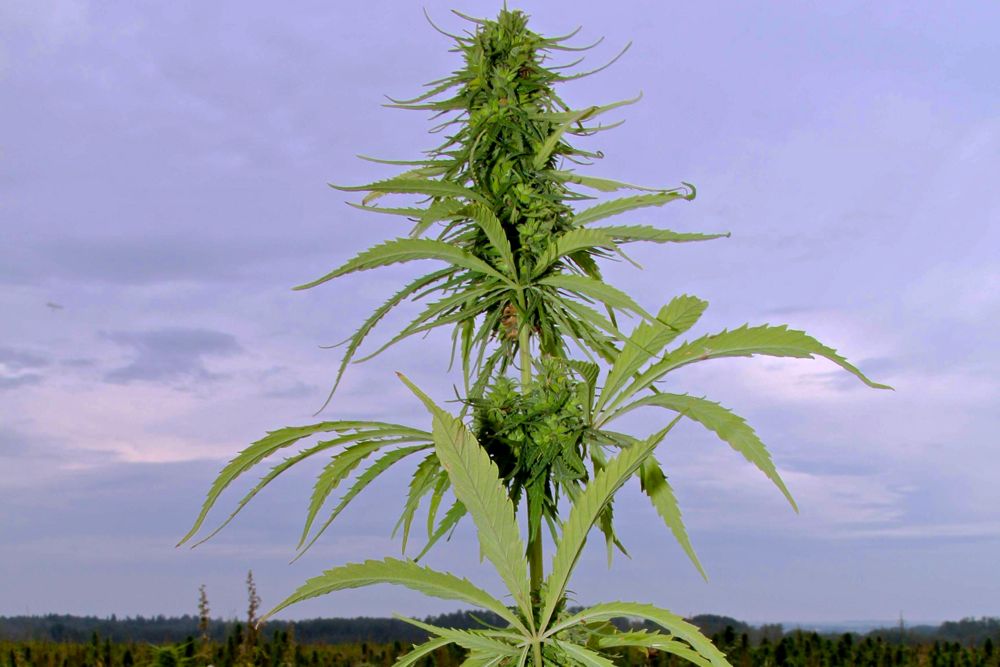Hemp growers eye new markets for 2018

Hemp producers across Western Canada will potentially gain access to lucrative new markets thanks to changes for this year’s harvest.
For the first time, hemp growers are allowed to harvest their plants’ buds, leaves and flowers, after receiving an exemption from Health Canada.
The market opportunities will be significant, said Ted Haney, executive director of the Canadian Hemp Trade Alliance.
“It is the beginning of a new and significant and important source of income to the industrial hemp sector. Absolutely no question about that,” he said.
It remains to be seen how demand for these new products, combined with production and pricing will work out, he said. However, this year will serve as a learning year for many growers as they figure out how to capture, store and market material they once left behind in fields.
Growers have to store flowers, buds and leaves on their farms until the Cannabis Act takes effect Oct. 17, at which point they will be legally allowed to sell them.
The exemption came Aug. 10, just in time for the current harvest, Haney said.
“This was a common sense solution that Health Canada really delivered on,” he said.
“So, I think we’ll see the first significant increase in CBD extraction and products and sales out of Canada this year, the 2018, 2019 crop year.”
CBD, or cannabidiol, is one of many naturally occurring compounds in hemp. In industrial hemp, higher levels of CBD are produced in place of THC. Industrial hemp has only 0.3 per cent THC, the chemical that produces the high effect in marijuana.
CBD is used in medical marijuana, in combination with THC, in drops and other delivery forms to treat pain and anxiety, as a sleep aid and as an anti-inflammatory.
It is used as a health food ingredient, with no specific health claims, in bars and cereals and other products.
Haney said licensed hemp growers who intend to harvest and store buds, leaves and flowers this year must inform Health Canada of their intentions and they should also get an amendment to their current licences that would allow them to sell the material after Oct. 17.
A large-producing hemp crop could yield 10 to 15 lbs. of CBD per acre, he said. Growers in Canada currently have about 135,000 acres in industrial hemp. In theory, that could mean total production of 1.35 million to 2.025 million lbs. of CBD.
In the real world, production will be below that amount, because of harvest vagaries and CBD extraction efficiencies.
Haney added the hemp sector is also working on approvals to use hemp as a livestock feed.
“So between food, feed, fibre and natural health, those are the four primary market sectors that the hemp industry, as it matures, will fully develop over time.”
This year’s harvest is coming in with about average yields of 700 lbs. per acre, he said, if yield numbers are generalized throughout Western Canada.
However, he said, growers in dry areas will get considerably less than that, even though hemp is considered to be a drought-tolerate crop.
In the north and eastern parts of the Prairies, the harvest appears to be about average. Irrigated fields are well above average.
“In irrigated acres, because of the great heat units we’ve had, it’s going to be a very large crop.”
Gross revenue for western Canadian hemp growers ranges from $400 per acre for dryland, conventional hemp to slightly more than $2,000 per acre for irrigated, organic hemp, Haney said.
Using $950 per acre as a working number, Haney said hemp growers could earn a combined $130 million in gross farmgate sales from the 137,000 acres seeded this year.
420 Intel is Your Source for Marijuana News
420 Intel Canada is your leading news source for the Canadian cannabis industry. Get the latest updates on Canadian cannabis stocks and developments on how Canada continues to be a major player in the worldwide recreational and medical cannabis industry.
420 Intel Canada is the Canadian Industry news outlet that will keep you updated on how these Canadian developments in recreational and medical marijuana will impact the country and the world. Our commitment is to bring you the most important cannabis news stories from across Canada every day of the week.
Marijuana industry news is a constant endeavor with new developments each day. For marijuana news across the True North, 420 Intel Canada promises to bring you quality, Canadian, cannabis industry news.
You can get 420 Intel news delivered directly to your inbox by signing up for our daily marijuana news, ensuring you’re always kept up to date on the ever-changing cannabis industry. To stay even better informed about marijuana legalization news follow us on Twitter, Facebook and LinkedIn.




